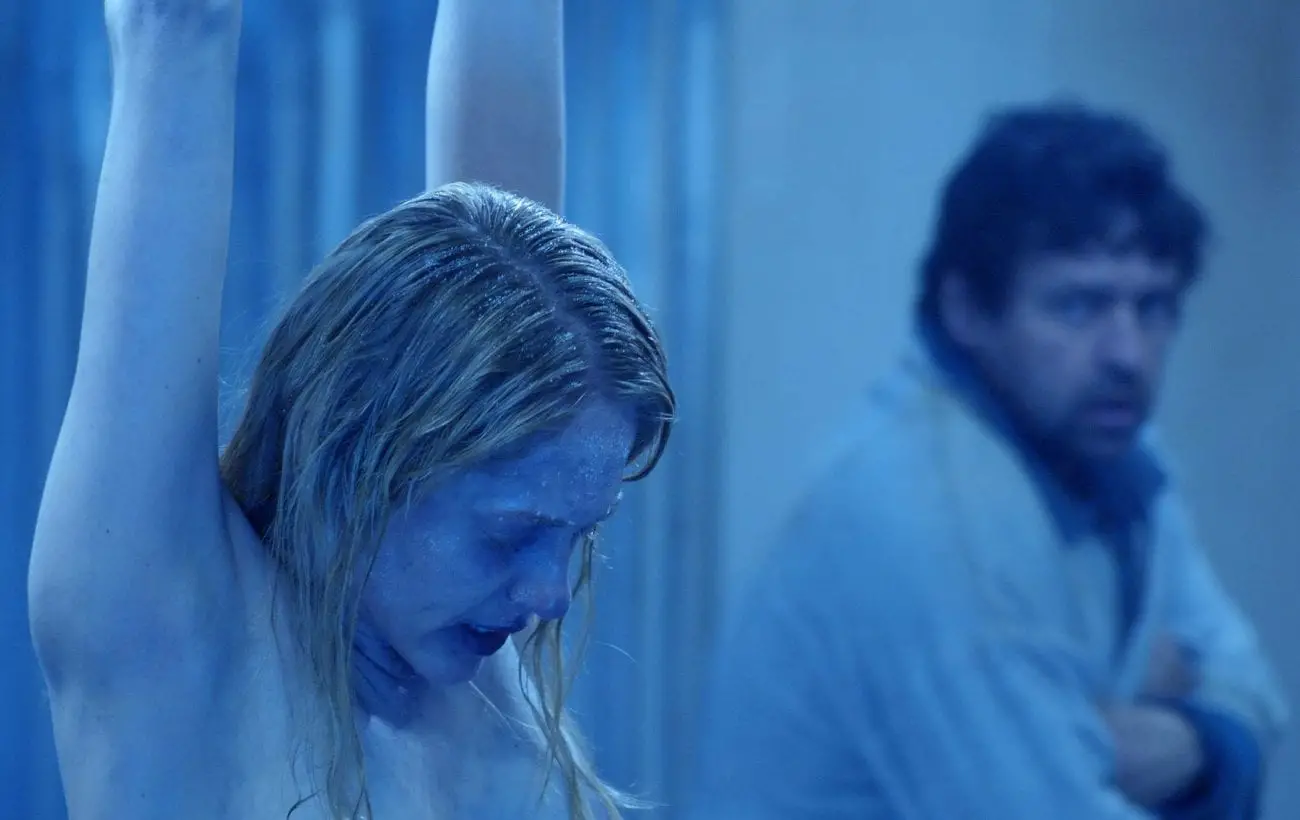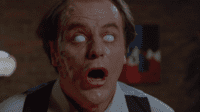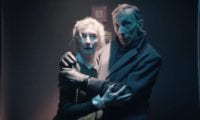Those who are familiar with the Saw franchise—and even some that aren’t—are familiar with the bathroom. Dating back to the opening moments of the first film—Adam waking up in the dingy and darkened bathroom, this set has been a staple of the franchise. With James Wan and Leigh Whannell making their final major contributions, so far, to the franchise, it’s only fitting that Saw III opens in this familiar location.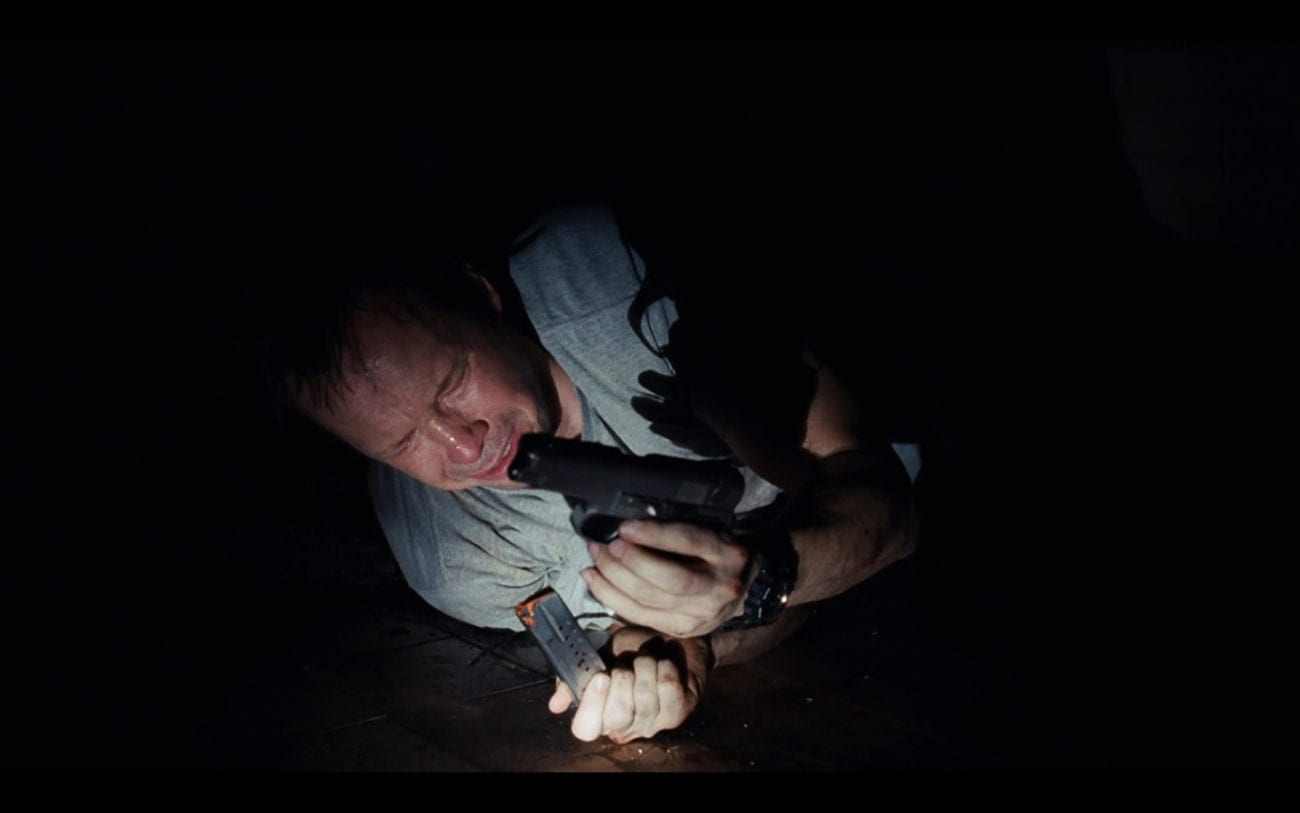
Picking up directly after the concluding events of Saw II, Detective Matthews (Donnie Wahlberg) is shackled and left to die in the aforementioned bathroom. Flash forward to six months later, and we find that John (Tobin Bell) is close to death from cancer and under the care of Amanda (Shawnee Smith). John wants Amanda to take over his “work” but is unsure if she is able to follow John’s strict guidelines. Knowing that there is doubt, John has two different people kidnapped: Doctor Lynn Denlon (Bahar Soomekh) and Jeff (Angus MacFadyen), a distraught man whose son was killed by a drunk driver.
Once kidnapped, Lynn is designated to keep John alive long enough for Jeff to complete his test. Amanda places Lynn in a trap that ties to John: if he dies, she dies. Armed with makeshift tools and medicine, Lynn works tirelessly to ensure John’s survival as Jeff begins his test.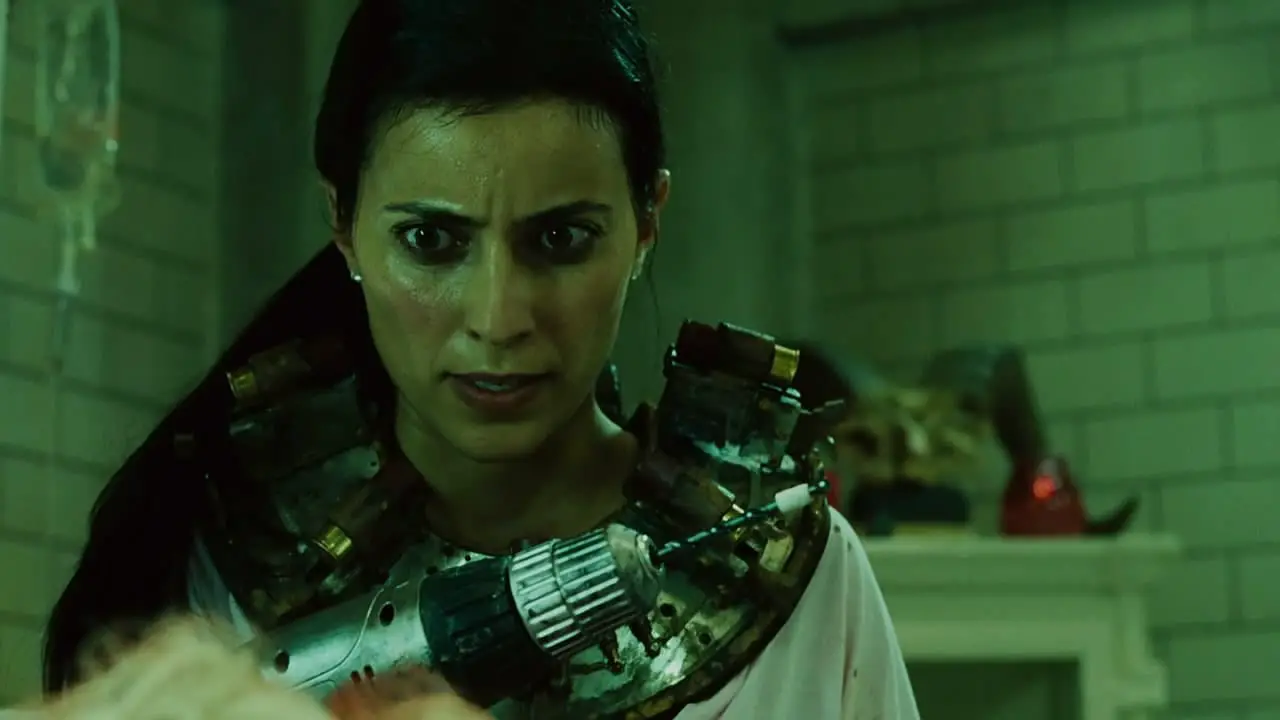
After losing his son, Jeff turned to the drink and lost his way in life. John takes Jeff and puts him into a different trap than earlier films. Instead of hurting himself to survive, Jeff must learn to forgive and forget those associated with his son’s death. As is to be expected, Jeff has a certain amount of time to complete his test as Plot A and Plot B work to come together by the film’s end.
Speaking of traps, as was discussed in the Saw II article, I define all sequels of the Saw franchise by the “Three T’s”: time, traps, and Tobin. Each one of the “T’s” is special in its own right, for each film, with each sequel to balance the “T’s” in equal measure. In this writer’s humble opinion, if you are able to find the right combination between the three, you get a film that comes together quite nicely. Does Saw III accomplish such harmony? Well, like the franchise’s timeline, it’s complicated.
Time
In what may be the most straightforward timeline to follow in the franchise, to this point, most of the film follows one narrative. You have the typical flashbacks, as would be expected, but with two strong storylines holding the present timeline, there is not as much time for flashbacks. Some of the flashbacks do add some depth to the convoluted narrative, while others are superfluous and act more like fan service than anything else.
While I do like the film opening with what happened to Detective Matthews, his resolution in Saw III felt flat. For those that haven’t seen this almost 15-year-old film, the next couple of lines will have spoilers, so jump two paragraphs down, if you like. Wedged between the two main storylines, it feels like Detective Matthews escaping the bathroom will affect the plot. It doesn’t. He and Amanda fight outside the bathroom, Amanda leaves him and John having to clean up her mistakes. We don’t see him again after that.
The Detective Matthews sub-plot falls flat because there is no end. He’s there, does nothing, and the credits roll. Initially, Amanda killed Detective Matthews in the hallway but was changed to keep the character alive for the future. Removing this action robbed Amanda from showing her differing ideologies from John and robbing the audience of a worthy demise for this character’s arc. So, keeping him alive will surely pay off for Saw IV, right?
The one thing Saw III, and the franchise as a whole, do well is ramp up the tension as the film reaches the climax. As Jeff makes his way through the gauntlet of traps and Lynn struggles to keep John going, the storylines converge in a typical Saw twist, or in this case, multiple twists.
Traps
About the gauntlet that Jeff has to traverse, he comes upon persons involved with the death of his child. In the overall of the franchise, the assortment of traps on display in this second sequel lack innovation. From a naked woman freezing to death and a man drowning amongst a vat of pig carcasses, the actual torture sequences are forgettable until we reach “The Rack.”
Watching the Saw films, people may question why we find these films entertaining. Each person would have their own answer. I find entertainment in the convoluted narrative and the excitement that comes from watching actors, writers, directors, and their crews work at the top of their game. So, when “The Rack” came up, you knew where this was going.
Jeff comes across the man who accidentally killed his son, Timothy (Mpho Koaho), strapped to a cross-like structure. Each appendage begins to twist as Jeff has to locate the combination to free Timothy. Jeff takes a long time—chastising Timothy for what happened before doing anything. Timothy cries out in pain as his limbs contort unnaturally. Timothy dies a horrible death as Jeff fumbles around in a lame attempt to free him.
Most traps in this franchise are gory, entertaining, and fun—for those who like that type of thing. The death of Timothy, though, strikes the wrong note from a writing and directing standpoint. Yes, Timothy took away Jeff’s son, and punishment should find him, but he didn’t deserve the fate John set him up to have.
Tobin
Moving on to something a bit more entertaining, Tobin Bell’s performance as John continues to be a series highpoint. Though mainly relegated to laying on a gurney, Tobin Bell owns his role and towers over the remaining cast members. Adding class to a complicated and serpentine character, Bell keeps John grounded and, maybe not relatable, but understanding.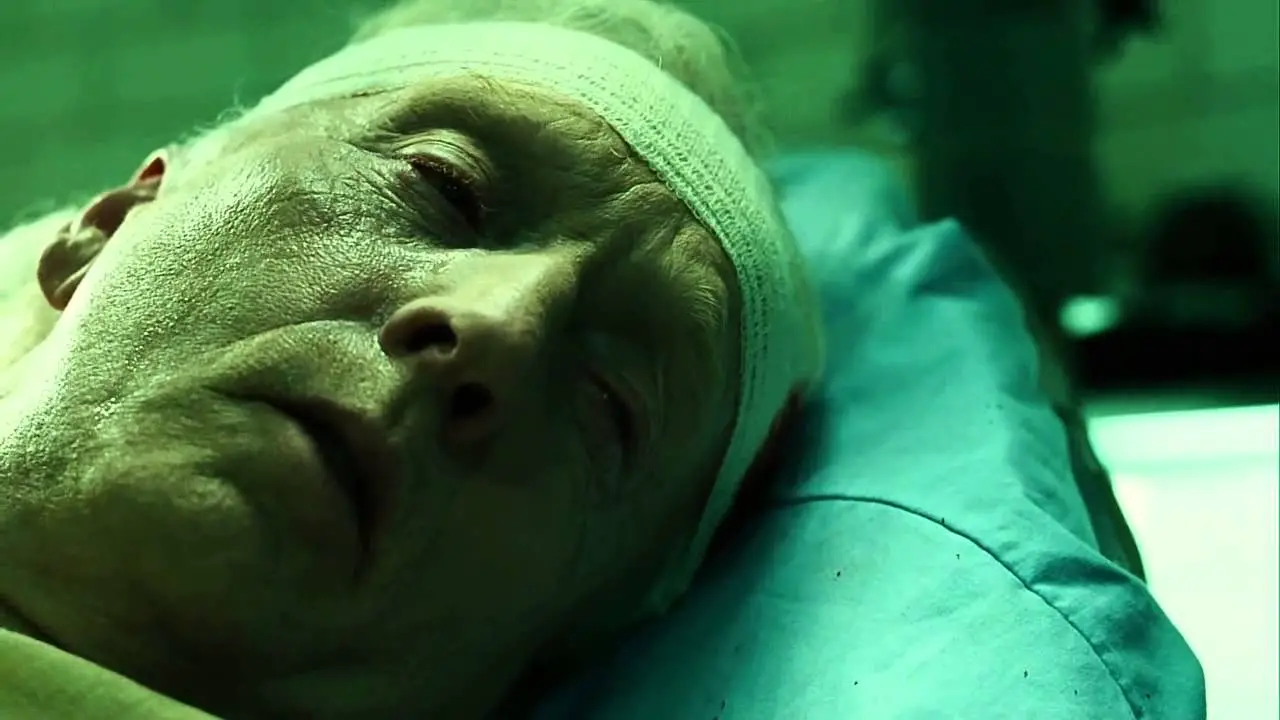
I would say that Tobin Bell’s best performance as John came in Saw II, but in this film, we get to understand what goes on in his mind, plus…what’s outside his brain. Bell allows the audience in on why he does the things he does and stresses the importance of following policies. His dynamic with Shawnee Smith’s Amanda is the most powerful relationship in the film. John lays the groundwork for Amanda to be his successor, but she struggles to follow John’s ideals. As the film comes to a close, so does the first wave of plotlines and characters. John, as a primary focus, fades to the background while other characters are promoted to the foreground to help propel the story forward, beginning anew with Saw IV. Let’s not get ahead of ourselves, though. That’s an article for another day.
Saw III is not the best that the franchise has to offer, but this entry is the last hurrah, of sorts, for John Kramer as the centerpiece and creators James Wan and Leigh Whannell. Sure, there were seeds planted to hint at more adventures within the Saw universe, but this third entry puts a nice roof onto the house that the earlier entries built.

